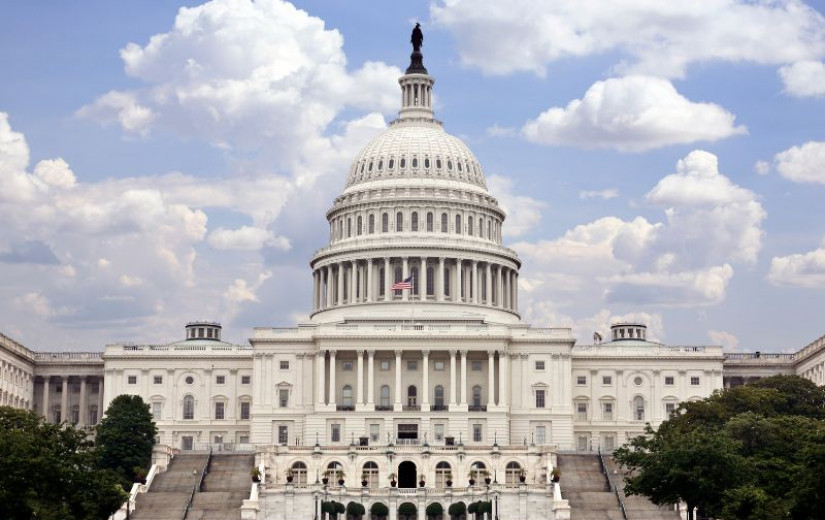
The turmoil on global markets has taken a breather ever since US President Donald Trump backed away from his grand plan to impose tariffs on almost every other country.
Stock markets have recovered almost all the ground they lost in the aftermath of the Liberation Day chaos and even bond markets have scaled back the panic, with yields continuing to edge lower.
But the turmoil is likely to resume soon.
Consumers globally have scaled back spending, corporations are calibrating the extent to which earnings expectations need to be lowered, American retailers are bracing for shortages and economists now are tipping much lower global growth and the possibility of a US recession.
That's because Mr Trump's main target, China, is still facing a broad-based tariff of 145 per cent, which effectively is a ban on Chinese imports.
Even if the China tariffs are halved, that would massively increase US costs and slow output across the globe.
And, for what?
The White House is convinced that America is a victim of half a century of unfair trade policies that have forced the American people to buy necessities from elsewhere and weakened its global position.
According to the president: "It's not just China, the European Union, they ripped us off for many, many years and those days are over," he repeated over the weekend at a doorstop interview.
So, is America being ripped off? And will tariffs fix the "problem"?

Financial markets have recovered ground since the initial tariff shock and turbulence, but America's economic woes are far from settled. (Reuters: Brendan McDermid)
1. What is a trade deficit?
In Donald Trump's world, deficits are always bad and surpluses are always good.
In isolation, it's an easy concept to sell to a deeply divided nation. You can point to a problem and then apportion blame.
But it ignores the fact that the US economy has powered its way to global domination during this period. So, it can't be all bad.
Most economists dismiss the idea that a trade deficit, even an ongoing one, is bad.
America's trade deficit occurs for the simple reason that Americans have a lot of money to spend and they buy more from offshore than they sell to foreigners.
No-one is forcing them to buy the stuff. It's not the fault of China, or that of Mexico or Canada for that matter.
Last year, America exported $US4.8 trillion ($7.5 trillion) worth of goods and services and imported $US5.9 trillion in goods and services.
That left a $US1 trillion gap, or deficit, which it financed by borrowing.
Mostly, it is big corporations buying either finished goods to sell to US citizens or components they need to manufacture goods in the US.
It isn't foreign governments behind a grand conspiracy to "rip off" Uncle Sam. It's American companies choosing to buy in goods from offshore.
As economist Jeffrey Sachs notes: "Suppose that you go on a shopping binge, spending more than your earnings by running up credit-card debt.
"You will now be running a current account deficit. Are the shops ripping you off, or is your profligacy driving you into debt?"
It's also worth noting that it is not all gimmicks and gadgets coming across the border.
Often, it is high-end equipment needed for industry and specialist services.
Put another way, America invests more money than it saves.
2. How do tariffs work?
Tariffs build a wall around your economy.
Those walls protect local industry from outside competition and allow industries and firms that ordinarily wouldn't be able to compete to survive.
The offset, however, is that consumers have to pay more.
Importers pay the tariff and then pass on those higher costs to customers.

Many products US shoppers buy are imported from China and now face steep tariffs. (Reuters: Brendan McDermid)
Many Americans faced with the prospect of paying far more for imported goods may then switch back to locally-produced goods.
But they would be buying items that they previously decided they couldn't afford.
That means consumers will have less money to spend on other things and US economic growth is likely to slow. And the price hikes on imported goods means inflation will rise.
Another downside is that businesses become accustomed to the protection and, with less competition, don't innovate, so falling behind the rest of the world.
There are other issues as well.
As we saw in recent weeks, as soon as the US announced the tariffs, those on the receiving end retaliated.
That makes it harder for US suppliers to sell into foreign markets.
So, while American firms may end up selling more product to Americans, their offshore sales are likely to slump.
Any benefit they may have received from being protected at home will be eliminated by penalties in their export markets.

This Boeing jet landed back in Seattle, Washington after being returned by a Chinese airline last week. (Reuters: David Ryder)
The same goes for foreign firms — offshore sales will fall, which means global growth, not just America's, will slow.
While the president bangs on about goods, he rarely mentions services.
America exports a large amount of services to the rest of the world. In this area, it racks up a surplus.
We're talking about things like education, tourism, software and information services.
While the surplus is not enough to overcome the deficit in tradeable goods, the recent tariff hits have enraged other countries and seen a marked drop in foreign students wanting to enter the US, as well as an international backlash from tourists.
As a result, the US trade deficit is likely to deteriorate as a result of the tariffs.
3. The wrong deficit
America doesn't just run a trade deficit. It also runs a massive internal or budget deficit — and that is a far bigger problem.
Years of handing out tax cuts to the extremely rich and vast overspending on defence has seen ongoing US budget deficits.
You need to borrow to finance that, so the national debt has blown out to 122 per cent of gross domestic product (GDP).
Those deficits continue to grow — during Trump's first term, he added $US8 trillion to the now bulging $US36.2 trillion in national debt, mostly through tax cuts.
Joe Biden added a similar amount with his Inflation Reduction Act.
America now spends more on servicing that debt each year than it spends on defence and the interest bill is the second biggest expense after social security.
The White House often incorrectly mentions the national debt as being caused by the trade deficit which it then uses to justify tariffs.
But if the tariffs cause GDP growth to slide or, worse, turn negative, then that debt situation could suddenly turn toxic.
That's now becoming a real threat as large numbers of economists tip a US recession this year.
Even worse, if the tariffs add to inflation and cause higher interest rates, servicing the debt will cost even more and the American economy could end up in serious trouble.
America's financial stability has already been called into question by global investors.
In the past month, they not only dumped Wall Street stocks, they abandoned US government bonds and the US dollar as well, a previously unimaginable set of events.
While the Trump administration has taken aim at the US budget, hacking away at essential government services, it is looking at another massive tax cut for the wealthy which could further undermine the national finances.
What ails America?
Globalisation was supposed to usher in a new era of wealth for the planet.
Poorer countries would advance into the upper ranks more quickly and developed countries would reap the benefits.
Many of those things came to pass, at least on paper.
The problem was that the riches weren't doled out fairly. And the US was among the worst in shuffling the benefits through to the uber-rich.
Wealth inequality blew out during the past half century. America may be rich on paper but the gap between the haves and the have-nots has widened into a yawning chasm.
Mortality rates have risen, life expectancy has dropped, crime and incarceration levels have soared.
The chaotic and hasty introduction of protectionism won't solve those problems.
It could make them worse.








